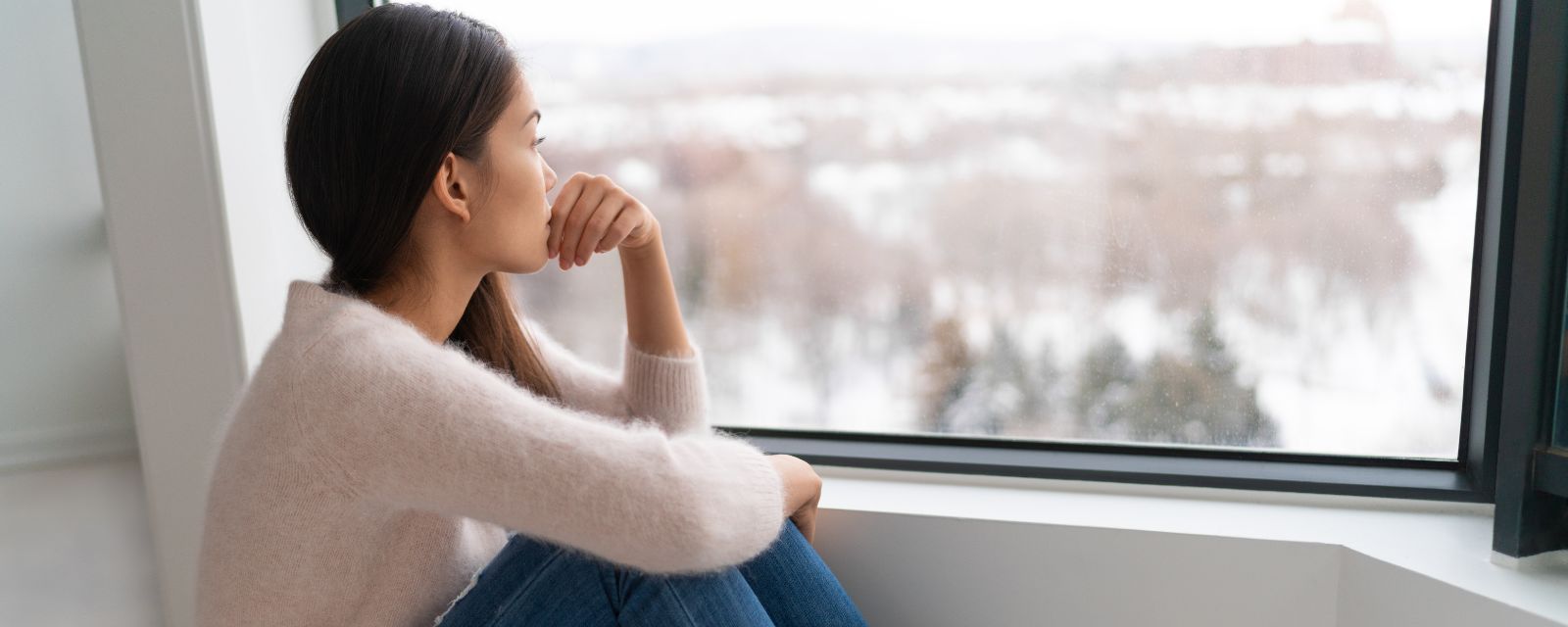Nurturing Community As a Chronically Ill Person
Community is vitally necessary for humans as a whole, yet finding and nurturing community can be inaccessible for chronically ill people. There is often physical inaccessibility that comes from living with chronic illness as well as social stigma and oppression that creates additional barriers for chronically ill people seeking connections.
While nurturing community should not be about one person’s actions, it is often necessary for people with chronic illness to take individual action for self preservation. This blog details steps one can take to find, build, and nurture community as a chronically ill person.
Background
Chronic illness is an umbrella term encompassing many conditions including diabetes, arthritis, long-COVID and more. While some estimates suggest more than 50% of Amerians have at least one common chronic illness and nearly 30% have two or more, these are likely underestimated and the prevalence of chronic illness in Americans is actually greater.
Chronically ill folks are disproportionately at risk of loneliness and of mental health concerns like anxiety and depression. These three factors also interact with each other and can worsen outcomes in each; chronic illness can lead to isolation which can worsen mental health which can in turn worsen physical health.
People who are chronically ill have to contend with stressors that non-chronically ill people do not: multiple doctors and frequent trips to see medical professionals, chronic pain or chronic fatigue, and different accessibility and accommodation needs, just to name a few. These stressors can cost both the emotional and physical health of a person with chronic illness. Many chronically ill folks have experiences of non-chronically ill family members, friends, professors, healthcare professionals, among others, diminishing their lived experience. This can make it difficult for people who are chronically ill to build and maintain community.
We live in an ableist society where chronic illness is viewed with contempt. Additionally, when a chronically ill person has multiple other marginalized identities, they are often further oppressed. The context of the ongoing COVID-19 pandemic, which has isolated and continues to isolate many high risk, chronically ill individuals, must also be acknowledged. Heightened tensions around the COVID-19 virus has further served to disenfranchise chronically ill people as eugenic sentiment treats chronically ill lives as disposable and has led to countless preventable deaths. Chronically ill people, especially those who are BIPOC, queer, and low income, are still experiencing disenfranchised grief both for the loss of life as well as the loss of safety.
The Importance of Community
Community offers a multitude of benefits for people as a whole but particularly for chronically ill people. Social connections can improve both quantity and quality of lifespan. Being in community can also provide more avenues for getting other needs met outside of social connection. Community can also be an avenue for mutual aid, where resources, services, and knowledge are shared. There are countless examples of people who are chronically ill and disabled being both the beneficiaries and benefactors of mutual aid, look to disaster relief in context of the climate catastrophe or dissemination of life saving information throughout the pandemic via social media.
Individuals who are chronically ill have always found ways to create community and advocate for themselves and each other. One rewarding way for chronically ill people to grow connections is to be in community with other chronically ill and disabled people. Attending support groups or meeting other chronically ill people through friends or events can be a great way to meet people with similar life experiences. Other chronically ill people often understand what it is like to have limited energy or requirements for different access needs. In recent years, meetup sites have sprung up to address the need for safer meetups for chronically ill people during the pandemic.
Understand Your Emotional and Physical Capacity
Whether a person with chronic illness is in community with other chronically ill folks, people without chronic illness, or somewhere in between, understanding physical and emotional capacity, and being able to communicate, and uphold boundaries is important. A boundary is a way for an individual to take ownership of their own needs and actions. A boundary does not involve giving commands to other people, instead a boundary involves assessing an individual’s own needs and communicating how the individual will take care of those needs to other people. Boundaries work best when they are enforced; communicating boundaries yet not consistently enforcing your limits through your own actions can lead to resentment, exhaustion, worsening physical health, among others. An individual can tailor the information they give regarding their boundaries to prevent disclosing their health status to people they are not comfortable giving that information to. Having strong boundaries are requisite for the goal of an individual surrounding themselves with people who are empathetic, understanding, and respectful of their needs.
Again, due to our ableist society, people with chronic illness often struggle with feelings of guilt and shame around, for example, not having energy, having to frequently cancel plans, or not being able to do certain activities. This can often lead to chronically ill people “pushing through” their pain or lack of energy to participate- potentially leading to injury, malaise, or overexertion. Boundaries - especially energy boundaries - may be useful when discussing energy limitations with non-chronically ill communities.
A common way to explain energy boundaries is through Spoon Theory. Created by Christine Miserandino in a personal story to explain to a non-chronically ill friend how energy levels are limited for a chronically ill person in a way that they are not for non-chronically ill people, Spoon Theory states that everyone starts their day with a set amount of energy, represented as a number of spoons. For non-chronically ill individuals that number can seem limitless, but for those who live with chronic illness, that number is much more restricted. Throughout the day, a person uses up their spoons doing activities, this can include enjoyable, unenjoyable, and neutral tasks. When a person runs out of spoons, they also run out of energy and thus need to rest. A chronically ill person can “borrow” spoons from the next day, but that can lead to overexertion or injury.
Examples of Boundaries:
- I will not go rock climbing because I usually end up with an injury.
- I cannot be around secondhand smoke because of my asthma, if you need to smoke please do it outside, otherwise I will have to leave.
- I would prefer to go to an event where people are required to wear masks, if that is not possible I can’t go out with you this weekend.
- I actually prefer to spend Tuesday nights alone and read
Other Ways to Build & Nurture Community:
Social Media:
Social media provides a wealth of opportunities for chronically ill people to build and nurture community. Meetups.com and Eventbrite.com can be a way to find groups and events in your local area and online. Additionally, sites like Twitter, Facebook, and Discord provide spaces for chronically ill people to interact through the use of groups and/or hashtags.
Focus on Your Interests:
- Videogames and role-playing tabletop games offer chronically ill people a chance to connect with other people in an accessible way. These types of games can be played in-person with a group or online with others using voice calls/video chats. For some chronically ill individuals there can also be the benefit of active distraction, which can be a way to cope with chronic pain.
- Advocacy in your local area can be a way to find like-minded peers with similar values while taking part in social justice actions. Stigma and oppression are still attached to chronic illness and disability and working towards change can be a meaningful, and often necessary, way that many chronically ill folks interact with their community.
- Book clubs can be a low pressure group activity with flexible attendance and cancellation policies. Many book clubs are online, in local bookshops or public libraries and offer a variety of topics to discuss.
- Take part in sports or fitness in ways that work for your body. Everyone with chronic illness has a different relationship with moving their body, even within two people who have the same chronic illness. To one person, dancing might be a great way to move their body and relieve stress while to another person this same activity might be inaccessible. Check in with your body often and work to discover what types of movement, if any, feel useful and restorative. Once that is understood, low pressure group sports or exercise classes could be a beneficial way to meet others and build community.
Practice Self Care:
- Being a member of a community means knowing your own needs and boundaries and being able to communicate them effectively. Self care enables an individual to take care of their needs to the best of their ability, thus making sure the individual has energy to communicate needs and boundaries. This may look like meditating, making sure you have energy for a shower at the end of the day, or reading books by other chronically ill folks.
- Self care does not have to be done alone. Community care is self care and interdependence is part of community care. Try hosting an online journaling group, attending a local clothing swap, asking for and/or accepting help when you need it, or having an accountability partner that will check up on you, and vice versa, on a specific concern.
- Seek out affirming healthcare providers. Medical doctors, nurses, dentists, mental health providers who are affirming of chronic illness can prevent chronically ill folks from feeling unheard, assist in effective health management, and aid in processing trauma, grief, and other complex, valid emotions.
Conclusion
Building and nurturing a sense of community can offer several benefits for emotional and physical wellbeing. If you are a person with chronic illness, take some time to reflect on the strategies shared above and see what works for you!
Further Reading:
Books:
Disability Visibility: First-Person Stories From the Twenty-First Century, Edited by Alice Wong
Care Work: Dreaming Disability Justice by Leah Lakshmi Piepzna-Samarasinha
Blog post:
You are not entitled to Our Deaths: COVID, Abled Supremacy & Interdependence
All material provided on this website is for informational purposes only. Direct consultation of a qualified provider should be sought for any specific questions or problems. Use of this website in no way constitutes professional service or advice.




